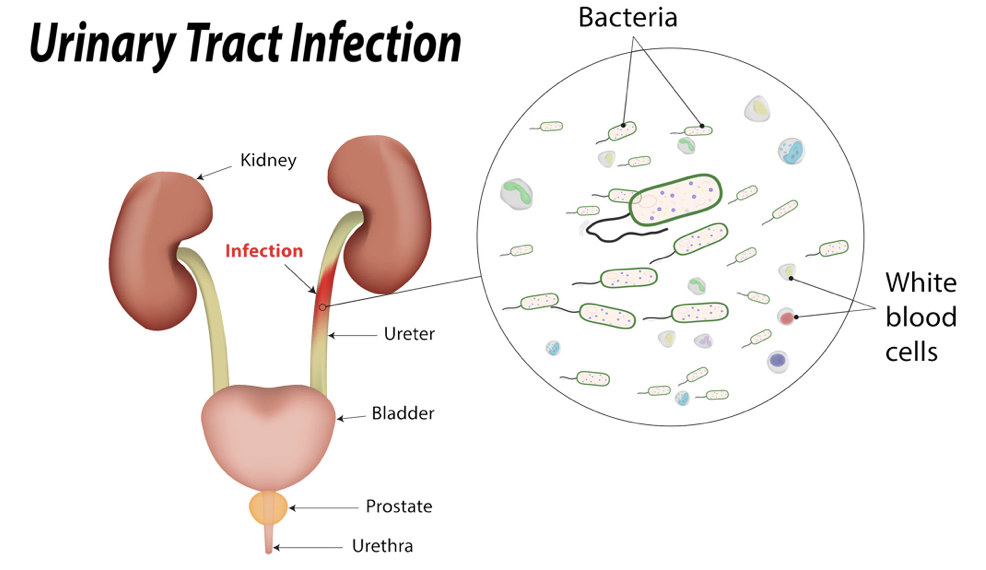Urinary Tract Infection (UTI)
A urinary tract infection is an infection involving part or all of the urinary tract. The effects of the infection depend on the interaction between the bacterium and the host’s defence mechanisms.
If the brunt of the infection is situated in the bladder, the symptoms tend to be of a local nature and the disease is called cystitits, or a lower urinary tract infection. Infection involving mainly the kidney is called pyelonephritis, or an upper urinary tract infection. In pyelonephritis the symptoms tend to be of a more systemic nature, such as fever, chills and a fast heart rate.
Most bacteria reach the urinary tract via the ascending route, traversing the urethra, bladder and sometimes the ureters up to the kidneys. The main source of these bacteria is the patient’s own large intestine. The female urethra is short and situated close to the faecal reservoir, explaining the much higher incidence of urinary tract infections in females compared to males.
Escherichia (E.Coli) is responsible for 85% of community acquired and 50% of hospital acquired urinary tract infections. Other organisms include Klebsiella, Proteus, E faecalis and Staphylococcus saprophyticus.

Urinary tract infections don't always cause signs and symptoms, but when they do they may include:
- A strong, persistent urge to urinate
- A burning sensation when urinating
- Passing frequent, small amounts of urine
- Urine that appears cloudy
- Urine that appears red, bright pink or cola-coloured (a sign of blood in the urine)
- Strong-smelling urine
- Pelvic pain, in women, especially in the center of the pelvis and around the area of the pubic bone
Complications of a UTI may include:
- Recurrent infections, especially in women who experience two or more UTI’s in a six-month period or four or more within a year.
- Permanent kidney damage from an acute or chronic kidney infection (pyelonephritis) due to an untreated UTI.
- Increased risk in pregnant women of delivering low birth weight or premature infants.
- Urethral narrowing (stricture) in men from recurrent urethritis, previously seen with gonococcal urethritis.
- Sepsis, a potentially life-threatening complication of an infection, especially if the infection works its way up your urinary tract to your kidneys.
You can take these steps to reduce your risk of urinary tract infections in:
- Drink plenty of liquids, especially water. Drinking water helps dilute your urine and ensures that you'll urinate more frequently, allowing bacteria to be flushed from your urinary tract before an infection can begin.
- Drink cranberry juice. Although studies are not conclusive that cranberry juice prevents UTI’s, it is likely not harmful.
- Wipe from front to back. Doing so after urinating and after a bowel movement helps prevent bacteria in the anal region from spreading to the vagina and urethra.
- Empty your bladder soon after intercourse. Also, drink a full glass of water to help flush bacteria.
- Avoid potentially irritating feminine products. Using deodorant sprays or other feminine products, such as douches and powders, in the genital area can irritate the urethra.
- Change your birth control method. Diaphragms, or unlubricated or spermicide-treated condoms, can all contribute to bacterial growth.
- Urinate when you feel the need. Don’t “hold it in.”
- Keep your genital area clean and dry.
